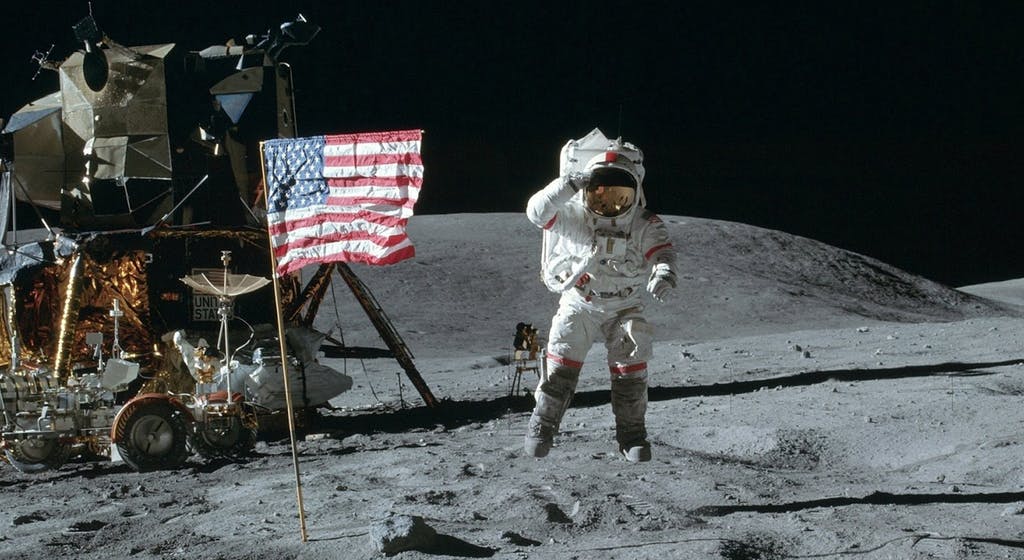
At the height of NASA’s Apollo program, a few hundred thousand people were employed in the massive undertaking to put men on the Moon and safely return them to Earth. A number of SEAS alumni and faculty played a role in the awe-inspiring feat, and four of them have told their stories to GW.
Dr. Christine Mann Darden
Christine Darden began her 40-year career at the NASA Langley Research Center in 1967 as a data analyst. Known as one of NASA’s “human computers” in the 60s and 70s, her story features in the 2016 bestseller, Hidden Figures: The American Dream and the Untold Story of the Black Women Mathematicians Who Helped Win the Space Race. In 1973, she was reassigned to the position of aerospace engineer in 1973, where she began her work in sonic-boom minimization. She eventually became an internationally recognized authority in the field. The Los Angeles Times highlights Dr. Darden in its article “How the women of NASA made their mark on the space program.’’ Dr. Darden is an alumna of SEAS.
Dr. Walker Land
SEAS alumnus Walker Land notes that the work he did for his thesis at GW found its way into work done in the original Saturn-Apollo missions. He describes his role in the Apollo program with this recollection:
“After finishing my graduate work at GW in 1964, I was sent immediately to NASA Huntsville, Alabama to participate in the Apollo lunar landing and fly-by missions working with Dr. Werner von Braun's original group. My first assignment was to figure out how to get to the moon and back. That took me four years, being in charge and working with an IBM group that reported to NASA. Our simulations were tested, and worked very well during the Apollo 8 lunar fly-by and circling the moon 10 times and return. After that assignment I proposed and was authorized to develop a real-time acquisition and loss acquisition for the ground station complex during the parking orbit phase of the Apollo missions. This was an important effort because many errors (both orbital and atmospheric) affected the AOS/LOS times (no GPS tracking was available), and because of the limited time the ground stations had the vehicle in view. These theories were tested and validated on Apollo 6, 7, and 9.”
Dr. Dianne Martin
Dianne Martin, professor emeritus of computer science at SEAS, worked as a programmer on the Apollo program. She says that she got involved with the program “quite by chance” but that it changed her life forever. Dr. Martin’s story is captured in the GW Today article “50 Years Later: Former GW Professor Reflects on the Apollo Program.” She also is mentioned in the Boston Globe article “50 years later, memories of the moon landing reflect a historic achievement during a turbulent time.”
Dr. Randy Graves
SEAS alumnus Randy Graves joined NASA straight out of college in 1963. He worked for NASA for more than 25 years and later earned his doctoral degree from GW. He recently reflected on his experience during the early years at NASA:
“I was extremely fortunate to have my dream job come true when I was offered and accepted a job at NASA’s Langley Research Center while a senior at Virginia Tech in 1962. I arrived at NASA Langley in June of 1963 and I was lucky to get my position of choice in a materials flight test group that flew multi-stage solid fuel rockets to test ablating heat shield materials under re-entry flight conditions. As a new employee, I was assigned the job of running trajectory simulations to develop stage timings for multi-stage solid rocket launches, calculating aerodynamic heating, and performing ablating material simulations. This introduction to ablative materials and aerothermodynamic analyses helped shaped my entire career at NASA.”
“In 1963 and 1964, many researchers throughout NASA and at contractor locations tested the Apollo Heat Shield Material (Avcoat 5026-39/HC-G) in a variety of ground-based heated wind tunnels and arc-jet facilities in search of a consistent ablation rate versus aerodynamic heating. There existed a very large variation in these ground test results. Our group proposed a rocket boosted re-entry flight test, and I was selected the principal investigator in 1964 for an Apollo Heat Shield flight test. For me, as a relatively new NASA employee, this was a dream job that was very exciting and highly motivating.”
“The most exciting part of the project was in 1965 when we launched the four-stage Pacemaker rocket from Wallops Island. Being in the launch center was a career highpoint when ‘my rocket’ was launched with a big roar. The flight test was a success and subsequent data analysis revealed two factors that had not been considered in the myriad of ground tests: the surface sealer had a significant impact on the Apollo Heat Shield initial ablation rates and the local aerodynamic shear can have a strong impact leading to high ablation rates.”
“Looking back, this Apollo Program-related flight test project was but one of many thousands of Apollo R&D projects that led to the successful Moon Landing in 1969, and I am very proud to have been a very small part of a big major national program.”

